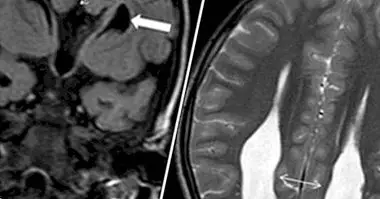Rosenberg's scale of self-esteem: what does it consist of?
Self-esteem is a construct that refers to the subjective assessment that people make of themselves . It differs from the self-concept in which an emotional, non-cognitive dimension is treated. Low self-esteem is related to depression and risk behaviors, while high self-esteem usually leads to greater psychological well-being.
Rosenberg's self-esteem scale , a brief test with good psychometric properties, is the most used instrument for the evaluation of self-esteem in clinical practice and scientific research.
- Related article: "10 keys to increase your self-esteem in 30 days"
Morris Rosenberg, the creator of the scale
Dr. Morris Rosenberg received his Ph.D. in Sociology from Columbia University in 1953. He then worked at Cornell University and the National Institute of Mental Health in the United States.
In 1965 he published the book Society and the adolescent's self-image (The society and the self-esteem of the adolescent "), through which presented his self-esteem scale .
He was Professor of Sociology at the University of Maryland between 1975 and 1992, the year of his death. His work on self-esteem and self-concept has survived him and today remains an important reference in these fields.
- Maybe you're interested: "Types of psychological tests: their functions and characteristics"
Rosenberg's self-esteem scale
Rosenberg's self-esteem scale consists of ten items; each of them is an affirmation about personal worth and satisfaction with oneself . Half of the sentences are formulated in a positive way, while the other five refer to negative opinions.
Each item is scored from 0 to 3 depending on the degree to which the person who answers is identified with the statement that constitutes it. Thus, 0 corresponds to strongly disagree and 3 to agree completely.
The items that make up the Rosenberg scale are the following:
- 1. I feel that I am a person worthy of appreciation, at least as much as others.
- 2. I feel that I have positive qualities.
- 3. In general, I tend to think that I am a failure.
- 4. I am able to do things as well as most others.
- 5. I feel like I do not have much to be proud of.
- 6. I adopt a positive attitude towards myself.
- 7. Overall, I feel satisfied with myself.
- 8. I would like to have more respect for myself.
- 9. Sometimes I feel certainly useless.
- 10. Sometimes I think I'm not good for anything.
The positive items (1, 2, 4, 6 and 7) are scored from 0 to 3, while items 3, 5, 8, 9 and 10 are valued in the opposite direction. A score below 15 indicates low self-esteem , placing normal self-esteem between 15 and 25 points. 30 is the highest score possible.
What is it for?
Rosenberg's self-esteem scale is the psychological instrument most used to measure self-esteem. This is because it is administered very quickly , with only 10 items, and its reliability and validity are high.
Adolescents were the initial objective of the self-esteem scale, although it has been generalized to the study of adults. It is used to assess both general and clinical populations, including people with substance abuse problems.
The Rosenberg scale has been validated in men and women of all ages in a large number of countries and has been used in cross-cultural studies of more than 50 countries.
On the other hand, we must bear in mind that knowing the level of self-esteem of people is a way of approaching your most internalized beliefs about yourself . People with some mental disorders or social, emotional and assertiveness problems tend to have low self-esteem, which makes it more difficult for them to undertake ambitious initiatives to improve their situation.
For example, a person with low self-esteem will tend to attribute their success to the fate or participation of external persons or entities, such as the help of a family member; this means that they do not experience these "good times" as a reward they want to access again in the future (or, at least, to the same extent that they would be seen as a reward by someone with good self-esteem) .
Findings of the Rosenberg scale
Cross-cultural studies conducted with the Rosenberg self-esteem scale have found that people tend to self-evaluate in a positive way , regardless of the culture to which we belong.
However, the components of self-esteem yes they vary depending on the culture . In this way, people from more individualistic societies (such as the United States) tend to feel more competent but less satisfied with themselves than those of collectivist cultures, for example that of Japan.
The scale has confirmed the relationship of self-esteem with two of the 5 major personality factors: Extraversion and Neuroticism. The more extroverted people with a lower level of neuroticism (as opposed to emotional stability) tend to have a higher self-esteem. In fact, it is hypothesized that self-esteem Can protect from anxiety symptoms .
Psychometric properties: reliability and validity
The original sample contained 5024 participants, all of them high school students from New York; as we have said, Rosenberg developed the scale initially to be used in adolescents . A large number of subsequent studies have confirmed the reliability and validity of the Rosenberg self-esteem scale.
In psychometrics, the term "reliability" refers to the absence of errors in measurement, while validity defines the degree to which the instrument measures what it intends to measure.
The test-retest reliability is between 0.82 and 0.88, and the Cronbach's alpha coefficient, which measures internal consistency, is between 0.76 and 0.88. The criterion validity is 0.55. further the scale correlates inversely with anxiety and depression (-0.64 and -0.54, respectively). These values confirm the good psychometric properties of the Rosenberg self-esteem scale.
Bibliographic references:
- Rosenberg Self-Esteem Scale. callhelpline.org.uk, The Betsi Cadwaladr University Health Board. Retrieved on March 11, 2017.
- Rosenberg, M. (1965). Society and the adolescent self-image. Princeton, NJ: Princeton University Press.
- Schmitt, D. P. & Allik, J. (2005). Simultaneous administration of the Rosenberg Self-Esteem Scale in 53 nations: Exploring the universal and culture-specific features of global self-esteem. Journal of Personality and Social Psychology, 89, 623-42.



















